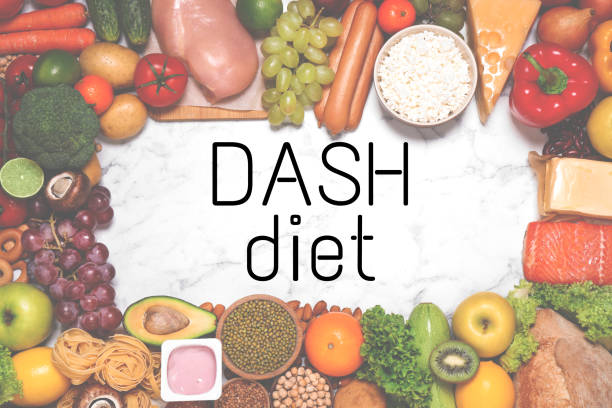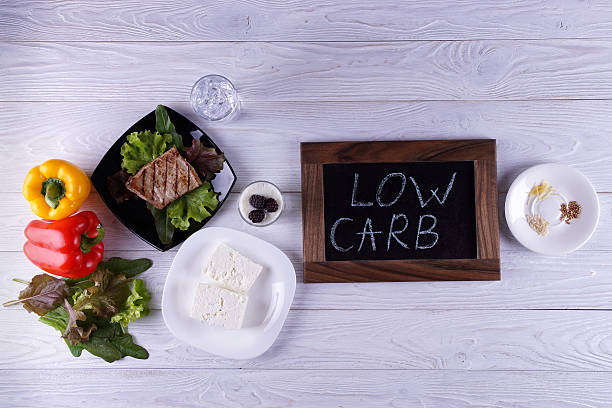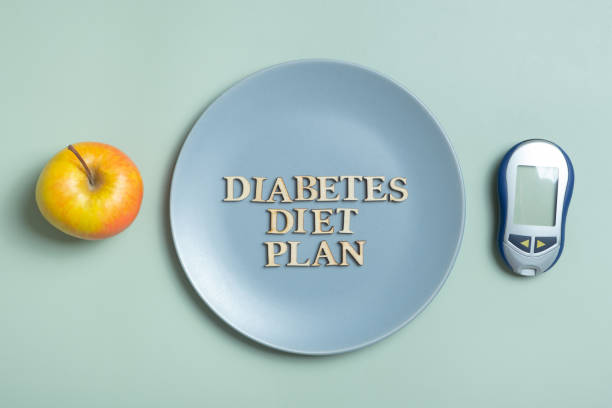Living with diabetes doesn’t mean you have to give up delicious food. In fact, smart food choices can help you stay healthy and enjoy every bite. With the right meal plan, you can enjoy healthy, tasty meals while keeping your blood sugar in check. A good diet can also help you manage your weight, boost your energy, and reduce the risk of diabetes-related problems.
In this post, we’ll walk you through five of the best diabetic-friendly diet plans you can start today. Each plan is easy to follow, rich in nutrients, and backed by science. Let’s dive in!
Why Choosing the Right Diet Matters for Diabetes
Eating the right foods helps you:
- Manage blood sugar levels
- Maintain a healthy weight
- Lower your risk of heart disease
- Boost your energy
According to the American Diabetes Association (ADA), a balanced diet is one of the most important tools for managing diabetes. The good news? There are several eating plans designed just for this purpose.
1. The Mediterranean Diet

What is it?
The Mediterranean Diet is based on the traditional foods eaten in countries like Greece and Italy. It focuses on whole, unprocessed foods and healthy fats. This includes plenty of fresh fruits, vegetables, whole grains, nuts, seeds, and olive oil. It also includes moderate amounts of fish, lean meats, and dairy.
The diet is low in sugar, salt, and processed foods. Studies show it can help lower blood sugar, improve heart health, and support weight loss. It’s not just a diet—it’s a healthy way of eating that you can enjoy for life.
Why it’s great for diabetes
- Rich in fiber from fruits, vegetables, and whole grains
- Healthy fats from olive oil, nuts, and fish help reduce inflammation
- Linked to lower A1C levels and better heart health
Sample foods to eat:
- Leafy greens, tomatoes, cucumbers
- Whole grain bread or brown rice
- Olive oil and avocados
- Fish like salmon or sardines
- Unsalted nuts
Learn more from Harvard School of Public Health.
2. DASH Diet (Dietary Approaches to Stop Hypertension)

What is it?
Originally designed to lower blood pressure, the DASH diet is also excellent for managing blood sugar and improving overall heart health. DASH stands for Dietary Approaches to Stop Hypertension. It encourages eating more fruits, vegetables, whole grains, lean protein, and low-fat dairy.
It also limits foods high in salt, sugar, and unhealthy fats. This balanced approach helps keep your blood sugar steady, reduces the risk of heart disease, and supports healthy weight loss. The DASH diet is easy to follow and works well for people with diabetes or prediabetes.
Why it’s great for diabetes
- Emphasizes low-sodium, nutrient-rich foods
- Controls blood pressure and helps prevent kidney problems
- Encourages whole grains, lean protein, and fresh produce
DASH-friendly foods include:
- Oatmeal or whole grain toast for breakfast
- Fresh fruits like apples and berries
- Low-fat dairy or plant-based milk
- Beans, lentils, and grilled chicken
Visit the National Heart, Lung, and Blood Institute for full details on the DASH plan.
3. Plant-Based Diet

What is it?
A plant-based diet focuses on foods that come from plants: vegetables, fruits, whole grains, nuts, and legumes. It limits or avoids animal products. This type of diet is rich in fiber, vitamins, and antioxidants, which can help control blood sugar levels and lower the risk of heart disease.
Plant-based meals are also lower in unhealthy fats and calories, making them great for weight management. Many people with diabetes find this diet helpful because it supports better digestion and steady energy levels. It’s a simple and natural way to eat healthy every day.
Why it’s great for diabetes
- High in fiber, which slows sugar absorption
- Supports weight loss and better insulin function
- Low in saturated fat, which helps heart health
Plant-based swaps:
- Replace white rice with quinoa or brown rice
- Use beans instead of meat in tacos
- Choose almond or oat milk over cow’s milk
- Snack on raw veggies or hummus
The Physicians Committee for Responsible Medicine supports plant-based diets for managing diabetes.
4. Low-Carb Diet

What is it?
This plan limits carbs, especially refined ones like sugar and white bread. These types of carbs can cause blood sugar spikes, which are harmful for people with diabetes. Instead, it includes more protein, healthy fats, and non-starchy vegetables.
Foods like eggs, fish, nuts, seeds, leafy greens, and broccoli are often part of the menu. This balance helps keep blood sugar steady, reduces hunger, and supports weight loss. A low-carb diet can be a smart choice for better blood sugar control and overall health.
Why it’s great for diabetes
- Reduces spikes in blood sugar
- Can help with weight loss
- Improves insulin sensitivity
Low-carb-friendly foods:
- Eggs and spinach for breakfast
- Grilled chicken with broccoli
- Zucchini noodles or cauliflower rice
- Greek yogurt with chia seeds
Note: Always check with your doctor before starting a low-carb diet, especially if you’re taking insulin.
5. Flexitarian Diet

What is it?
“Flexitarian” is short for “flexible vegetarian.” You mostly eat plants but can enjoy small amounts of meat or fish occasionally. This diet is not strict, which makes it easier to stick with long term. It focuses on fruits, vegetables, whole grains, legumes, nuts, and seeds. At the same time, it allows you to include animal products in moderation.
The flexitarian diet can help lower blood sugar, improve heart health, and support weight loss. It gives you the health benefits of a vegetarian diet without cutting out your favorite foods completely.
Why it’s great for diabetes
- Offers flexibility without strict rules
- Reduces intake of processed meat
- Helps manage weight and blood pressure
What to eat:
- Veggie stir-fry with tofu or lean chicken
- Smoothies made with fruit and plant-based milk
- Whole grain wraps with veggies and hummus
- Meatless meals several times a week
According to the Mayo Clinic, the Flexitarian Diet can support healthy blood sugar levels.
How to Choose the Best Plan for You
Every person is different. What works for one person may not work for another. Consider these factors when choosing a diabetic-friendly diet plan:
- Your current health and weight – Your blood sugar levels, weight goals, and overall health will help guide the right plan for you. Some diets are better for weight loss, while others help with blood pressure or cholesterol.
- Food preferences and lifestyle – Pick a plan that fits your taste and daily routine. If you enjoy cooking, you might like more detailed meal prep. If you’re always on the go, look for quick and simple options.
- Medical conditions or allergies – If you have other health issues like high blood pressure, kidney problems, or food allergies, make sure the diet supports your unique needs and restrictions.
- Support from a healthcare provider – Talk to your doctor or dietitian before starting any new diet. They can help you find a plan that’s safe, effective, and tailored to your health goals.
You can even combine elements from different plans. For example, you can follow a Mediterranean-style plant-based diet or a low-carb Flexitarian plan. Mixing approaches gives you more flexibility while still supporting your blood sugar and overall health.
Tips for Getting Started
Here are simple ways to start your new eating plan:
- Meal prep on weekends – This saves time and reduces unhealthy choices. Cook a few meals in advance, portion them out, and store them in the fridge or freezer. This way, you always have healthy options ready to go.
- Shop the perimeter of the grocery store – That’s where the fresh food is! Stick to the outer aisles to find fruits, vegetables, lean meats, dairy, and whole grains. Avoid the middle aisles filled with processed snacks and sugary items.
- Read labels carefully – Watch out for hidden sugars and carbs. Check serving sizes, total carbs, and ingredients. Look for words like “corn syrup,” “maltose,” or “dextrose,” which are all forms of sugar.
- Eat slowly and mindfully – Helps you enjoy food and avoid overeating. Take small bites, chew well, and focus on the taste and texture of your food. This can also improve digestion and help you feel full longer.
- Track your meals – Apps like MyFitnessPal or Glucose Buddy can help. Keeping a food journal lets you see patterns, stay accountable, and better manage your blood sugar levels.
Common Questions About Diabetic Diet Plans
Can I still eat sweets?
Yes, in moderation. Look for options with low added sugar, and pair them with fiber or protein to reduce blood sugar spikes.
Are carbs bad for diabetes?
Not all carbs are equal. Whole carbs like oats, quinoa, and beans are better than refined ones like white bread or soda.
Should I skip meals?
No. Skipping meals can cause blood sugar to drop too low. It’s better to eat small, balanced meals throughout the day.
Final Thoughts: Take Control of Your Health Today
Living with diabetes doesn’t mean giving up good food. You can still enjoy tasty, satisfying meals every day. By choosing a diabetic-friendly diet plan that works for you, you can take charge of your health, feel better, and enjoy your meals again.
The right diet helps you manage blood sugar, maintain a healthy weight, and reduce the risk of complications. It also gives you more energy and supports overall well-being. With the right foods and a simple plan, living well with diabetes is possible—and delicious.
Whether you go Mediterranean, plant-based, or low-carb, the key is staying consistent and making smart choices every day. Small changes add up over time, and healthy habits can lead to big results. Focus on eating more whole foods, cutting back on added sugars, and watching portion sizes.
Keep track of your blood sugar and listen to your body. Find a meal plan that fits your lifestyle and is easy to follow. The best diet is one you can stick to—and enjoy—for the long run.

